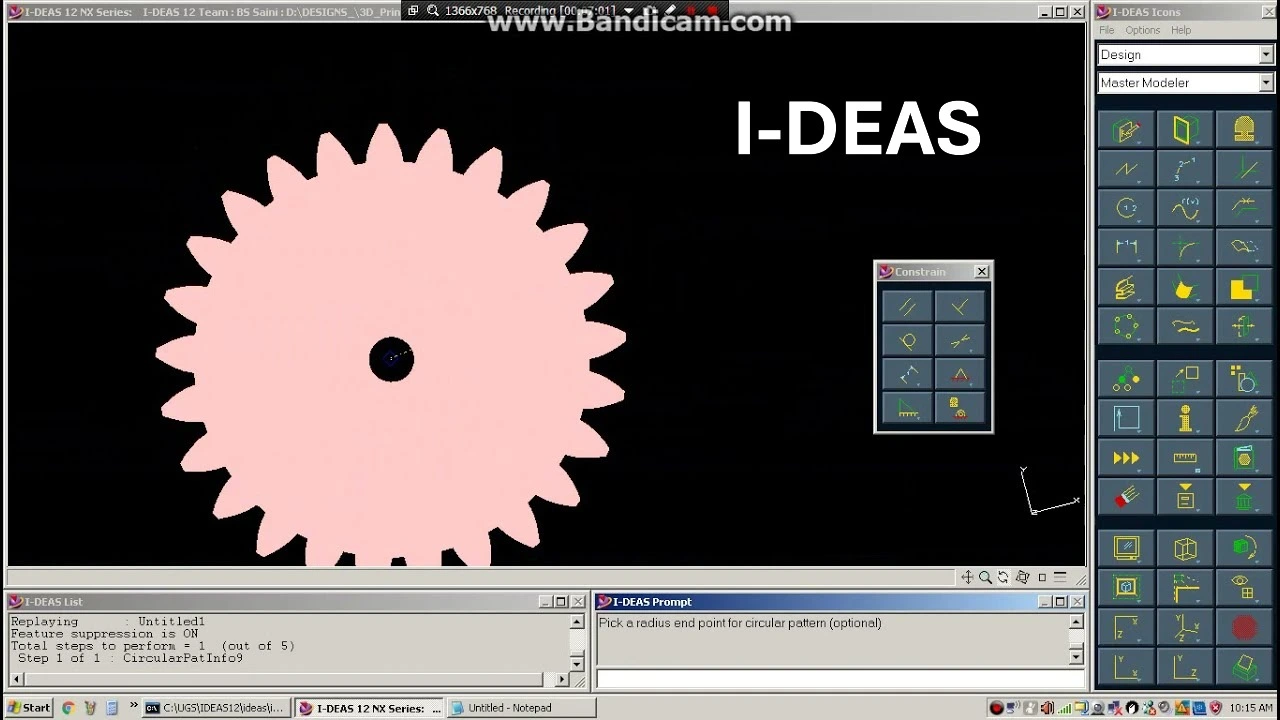
Data exchange between different CAD systems represents a crucial challenge for industrial companies. This article explores interoperability solutions for I-DEAS software, presenting its native formats, exchange capabilities, and available tools to facilitate model conversion and analysis.
History and Introduction of I-DEAS
I-DEAS (Integrated Design and Engineering Analysis Software) is a Computer-Aided Design system initially developed by SDRC (Structural Dynamics Research Corporation) in the 1980s. This software experienced a major evolution with its Master Series version, widely used in aerospace, automotive, and manufacturing industries for its advanced 3D modeling capabilities.
In 2001, EDS acquired SDRC and merged I-DEAS with Unigraphics to create NX. Subsequently, Siemens PLM Software (now Siemens Digital Industries Software) took over the software development. While active development of I-DEAS has ceased in favor of NX, many companies continue to use I-DEAS for their existing designs and technical archives.
Main application areas of I-DEAS:
- Mechanical design
- Surface and solid modeling
- Finite element analysis
- Technical data management
- Industrial drawing and documentation
I-DEAS Extensions and Native Formats
I-DEAS uses several specific file extensions for its different functionalities:
- .mf1, .mf2 - Model files containing 3D geometries
- .prt - Individual part files
- .asm - Assembly files for complex structures
- .drw, .asc - Drawing and technical drawing files
- .pkg - Package files for grouping multiple elements
- .arc, .unv, .prg - Archive files, universal data, and programs
- .lis - Analysis results files
Import/Export Capabilities and Interoperability
Interoperability has always been a strength of I-DEAS, allowing data exchange with other CAD systems. According to available information on formats supported by our tools, I-DEAS is compatible with several industry standard formats:
Supported import/export formats:
- IGES (.igs, .iges) - Historical exchange standard
- STEP (.stp, .step) - ISO neutral format for 3D data exchange
- STL (.stl) - Format for additive manufacturing and rapid prototyping
- JT (.jt) - Lightweight visualization format developed by Siemens
- DXF/DWG - AutoCAD formats for 2D and 3D data
- Parasolid (.x_t, .x_b) - Geometric kernel format used in numerous CAD systems
- NX (.prt) - Compatibility with I-DEAS successor
CAD Interop Solutions for I-DEAS Data
3DViewStation: Visualization and Analysis of I-DEAS Models
3DViewStation offers a powerful solution for visualizing and analyzing I-DEAS models without requiring installation of the original software. According to the most recent information (February 2025), 3DViewStation supports the following I-DEAS formats:
- Supported extensions: MF1, ARC, UNV, PKG
- Compatible versions: up to I-DEAS 13.x, NX 5, NX Ideas 6
- Available features:
- High-performance 3D visualization
- Geometry analysis and measurement
- Creation of sections and exploded views
- Extraction of technical information
The 3DViewStation solution also allows export to other formats, thus facilitating the conversion of I-DEAS models to more recent or universal formats.
DEXcenter: Automation of I-DEAS Data Exchanges
DEXcenter is a CAD data exchange automation platform that offers specific functionalities for I-DEAS models:
- Automation of batch conversions of I-DEAS data
- Implementation of standardized exchange workflows
- Validation and quality control of converted models
- Integration with existing PDM/PLM systems
- Complete traceability of data exchanges
This solution allows companies using I-DEAS to implement robust data exchange processes with their partners, subcontractors, or customers using other CAD systems.
Recommendations for I-DEAS Model Exchange
To optimize the interoperability of I-DEAS models, here are some recommended best practices:
Model preparation before export:
- Verify geometry integrity (absence of free faces, open seams)
- Simplify complex assemblies for external exchanges
- Document assembly structure and references used
- Use consistent units throughout the model
Choice of exchange format:
- Favor STEP AP214/AP242 for complete exchanges including product structure
- Use JT for lightweight visualization and sharing with partners
- Prefer Parasolid to preserve geometric precision with compatible systems
- Export to IGES only for historical compatibility
Validation after conversion:
- Check volumes and surfaces after conversion
- Control the preservation of assemblies and constraints
- Ensure geometric tolerances are correctly transferred
- Validate important metadata and attributes of the model
Conclusion
Despite its age, I-DEAS remains present in many industrial companies, particularly for long-term projects and historical data. Modern interoperability solutions such as 3DViewStation and DEXcenter allow efficient integration of this data into current digital environments.
Expertise in I-DEAS data conversion and validation remains a valuable asset for aerospace, automotive, and manufacturing industries that must maintain digital continuity of their products over several decades.
For more information on our CAD interoperability solutions for I-DEAS or for a personalized demonstration, contact our CAD Interop experts.



